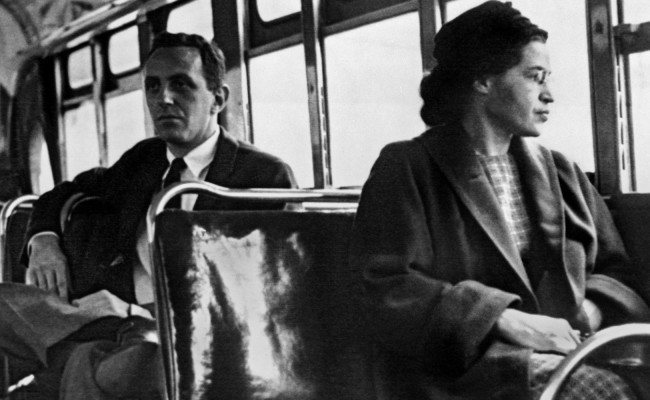In Darwin on 30 November, the temperature reached 33 degrees. Two pregnant Iranian women, known as Maryam and Tahere, were flown from an immigration detention centre on Nauru to the Northern Territory to give birth in safe medical facilities. They exited the plane, perhaps moving gingerly, as you would imagine of women with ballooning bellies. They and their families hopped on a small bus. They expected to arrive at accommodation within the community, as they have been granted refugee status and now are settled on Nauru.
Instead, they were taken to Wickham Point Detention Centre.
Maryam’s husband Adnan went inside with their 10-year-old son, Amir, but Maryam and Tahere refused to leave the bus, unwilling to return to detention. Refugee advocacy groups report the air-conditioning was turned off in a bid to encourage the women to get out. But the protest ended only when they were dragged off, after three days on the bus.
This standoff, on the northern tip of Australia on a hot day, parallels another bus protest on the other side of the globe, though the two are separated by a distance of sixty years. For Maryam and Tahere’s action took place on the anniversary of Rosa Parks’ refusal to give up her seat.
On 1 December 1955, Rosa Parks, an African-American woman, boarded a bus in Montgomery, Alabama. The 42-year-old seamstress was travelling home after a day working at a department store. As in all buses in Montgomery, white people sat at the front and black people at the back. On the busy commute, the white section filled up; the bus driver demanded Parks and three other people of colour to move to the back.
While the others complied, Parks sat in quiet defiance. She later wrote in her autobiography she was tired: not from a day’s work, but ‘tired of giving in.’
The bus driver called the police, and Parks was arrested. She was charged with violating segregation laws. On 5 December, she was found guilty and fined a total of $14.
Her action didn’t take place in a vacuum. In fact, Parks wasn’t even the first woman to be arrested for refusing to follow the rules. She was, however, a former secretary of the National Association of Advancement of Coloured People (NAACP), the organisation with which Martin Luther King Jr was involved.
Local leaders in the black community had waited for years for a strong and honest person to be a plaintiff in a court case that would challenge the validity of segregation laws. Parks was that person. Due to her age and respectability, she was judged likely to garner ‘white support’. With the help of the NAACP and associated lawyers, Parks appealed her conviction through the court system. Her lawsuit, though stalled in the state courts, led to the Browder v Gayle case in 1956, when segregation laws on public transport were found unconstitutional.
The day of Parks’ trial, the NAACP organised a bus boycott in Montgomery. In the small city, 70 percent of public transit travellers were African-American, meaning that the boycott posed a serious threat to the bus company. The campaign lasted a year, until Browder v Gayle was successful and bus segregation eliminated.
The civil rights movement used civil disobedience as a technique to gain political attention and encourage change. By acting illegally, Park made more than a personal objection; her action was an opportunity to publicly (and legally) challenge the validity of the law.
‘One has a moral responsibility to disobey unjust laws,’ wrote Martin Luther King Jr, in his famous call to arms Letter from Birmingham Jail. The godfather of the civil rights movement in the US, King trained followers in what he called non-violent direct action: to challenge the mechanisations of injustice in an integral, peaceful way.
The similarities between Rosa Parks’ choice and the immovability of Maryam and Tahere are hard to ignore. Could civil disobedience be key to changing Australian refugee policy?
We’ve seen imprisoned asylum seekers protest violently in the years since the introduction of mandatory detention – without positive results. We are familiar with newsreaders telling us tales of misbehaving detainees, running amok in the cages in which they should feel lucky to be captive.
Curtin Detention Centre was closed in 2002 by the Howard Government following riots and fires. A 2011 rooftop protest in Villawood led to violent riots, said to have caused $9 million in damages, with four perpetrators given jail sentences. In 2011, the Christmas Island detention centre was allegedly overrun with riots, as detainees threw rocks at staff and created ‘millions of dollars worth of damage’. The Australian Federal Police controlled the angry crowd with tear gas and bean-bag rounds. These are called ‘less lethal munitions’, which is police-speak for ‘bullets that probably won’t kill you’.
Then there are the hunger strikes and the epidemic of self-harm.
‘Most asylum seekers protest out of desperation and despair,’ says Abdul Karim Hekmat, who arrived as a refugee from Afghanistan and spent five months in detention. In 2011 in the Sydney Morning Herald, he explained, ‘They hope to get the attention of the authorities and the public for their plight.’
This is the purpose of protests by asylum seekers: first, to state that their treatment is unjust; second, to bring public attention to the fact, with hope that this attention will bring change.
Unfortunately, angry and violent protests don’t seem to do any good for asylum seekers in detention.
‘Rioters are seen as saboteurs and criminals,’ continued Hekmat. Anger manifested in the violence on our screens contributes to the public’s perception of refugees as dangerous outsiders, as people who should be feared.
In response to the 2011 Christmas Island riots, Foreign Minister Kevin Rudd said, ‘How can you expect our officials to process applications for asylum when that sort of thing is happening?’
How dare you stamp your feet in impatience, little people, how dare you act out your desperate fury?
Those within the fences aren’t the only ones protesting.
A decade ago, hundreds of people travelled from all over the country to camp outside the Baxter detention centre, near SA’s Port Augusta, over the Easter weekend. In 2003, the protests ‘turned violent’, with eyewitness reports of police in riot gear. Protestors brought balloons to challenge the air restrictions around the detention centre. The police popped them. They bought kites, which the police confiscated. There were thirty-three arrests.
The South Australian Premier of the time, Mike Rann, told the press that the cost of policing the 2003 Easter protest was around $1 million. He told the ABC, ‘That money could be better spent fighting crime rather than having to deal with feral protestors from Victoria.’
Australians have also staged many peaceful marches around the country against inhumane asylum seeker policy. Unfortunately, the government doesn’t seem to be listening: every month, the Senate allows greater injustices to pass into law. It can feel like there is no effective way for us to protest.
Maybe civil disobedience is the answer.
There have been a few incidences of non-violent protest in Australia. Back in 2004, Merlin Luck was evicted from the Big Brother house. When required to go on stage to talk to Gretel Killeen in front of a live audience, he placed black tape over his mouth and held a sign saying ‘Free th Refugees’ (the ‘e’ fell off).
In November, activists locked themselves to a gate at Villawood Detention Centre to prevent asylum seekers being transferred to Yongah Hill, with three arrests.
Since March this year, a movement called Love Makes A Way has been gaining traction. Nuns, reverends, and ordinary Christians enter the offices of politicians (Scott Morrison, Tony Abbott, and local constituents) and refuse to leave until they are given an answer to the question: when will children be released from detention?
Of course, there is no response, and they are arrested for trespassing. Over a hundred have been arrested this year.
Those taking part in this movement are directly informed by the philosophy of King.
‘Nonviolent direct action,’ he wrote, ‘Seeks to create such a crisis and foster such a tension that a community which has constantly refused to negotiate is forced to confront the issue. It seeks so to dramatise the issue that it can no longer be ignored.’
Every Love Makes A Way action is backed by a fierce social media campaign, with the view of strategically gaining as much exposure as possible. Through fostering tension – images of conservative citizens (often grandparents) being arrested – and dramatising the issue (hundreds of children imprisoned in detention centres with terrible conditions) the movement is designed to appeal to the people still sitting on the fence.
The full effect of the campaign is not yet clear, though Love Makes A Way has been mentioned by Scott Ludlum (Greens) and Sue Lines (ALP) in the Senate received coverage on major media outlets.
Non-violent civil disobedience brings attention to injustice. If perpetrated by the oppressed party, it can allow them an opportunity to challenge the validity of law.
Australian resistance to asylum seeker policy in this form is gaining momentum. It may be the way forward for refugees themselves.
Perhaps in that overheated bus last week, Maryam, Tahere and their husbands made a snap decision to resist. Perhaps, like Parks, they were ‘tired of giving in’, tired of being behind enclosed in fences, tired of being herded by guards, tired of white walls and shared showers and caged dreams.
Perhaps non-violent action is the road to change.






